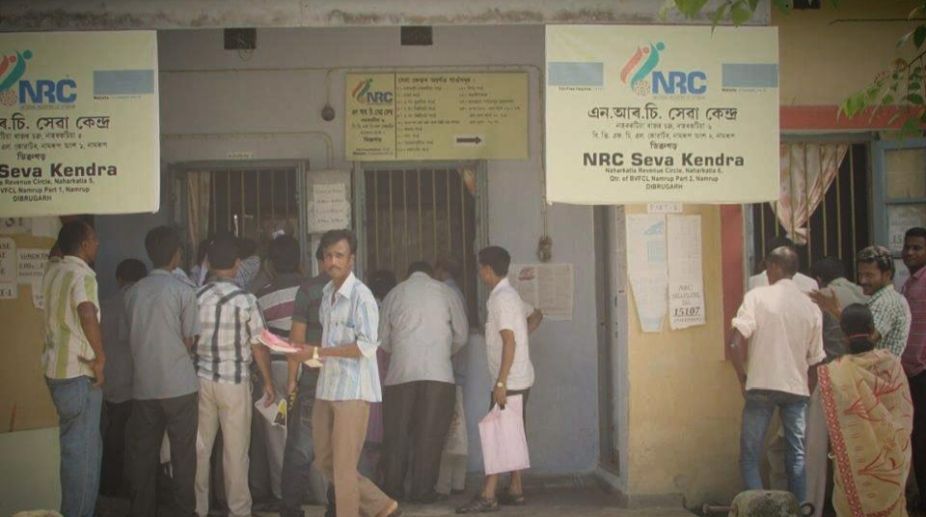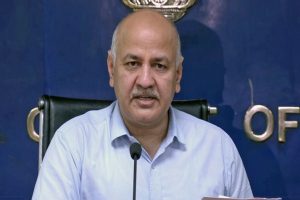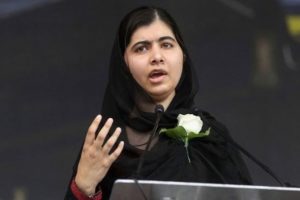Assam’s updation process of the National Register of Citizens is in danger of being derailed by some interested politicians. The linguistic, cultural and religious minorities are scared of being excluded from the updated NRC, as panchayat records submitted by married women and also by some male members have been declared null and void by the High Court.
This has created a situation, as per the statement by Prateek Hazela before the Supreme Court, that only 17.40 lakh of a total of 48.09 lakh, who submitted panchayat records, are original inhabitants. Apprehending the future of the rest of the people, several cases are being filed before the Supreme Court, which will take a final call on the matter.
Advertisement
Apart from such worries about being declared as non-original inhabitants prima facie and being rejected because they submitted panchayat records on the part of minorities of Assam largely living in Dhubri, Barpeta, Nagaon and Barak Valley, the larger anxiety lies in the “changing goal posts” of the whole process. The modalities of NRC updation kept changing from proof about ancestor’s belonging to Assam pre- 1971 to something called “family tree” to establish full picture and spread of the family in terms of an “original forefather” to a post-facto rejection of panchayat documents. The process has been gigantic and mind-boggling.
In between, the Centre too issued a notification in 2015 declaring nonMuslim inhabitants coming from neighbouring countries as bearers of an inalienable right to residence in India and that created a clear divide in religious terms. It was looked upon as an attempt to secure Hindu Bangladeshis in Assam by powerful social and political organisations like the All Assam Students Union, Assam Jatiyabadi Yuvak Chhatra Parishad and Krishak Muki Sangram Samiti. Indeed politics and law together have made the situation rather murky for carrying out an impartial quasi-judicial exercise of determination of citizenship of an applicant, who has applied for inclusion of his/ her name in the NRC. Jamiat leader Arshad Madani’s recent statement at a meeting in Delhi, in which he invoked metaphors of Myanmar and genocide as a consequence of turning a large number of Muslims stateless through the NRC updation process, has rattled the security agencies. Assam chief minister Sarbananda Sonowal has warned the minority organisations against “creating communal divide” and asked for central security forces.
After Madani’s statements, the state perceives a threat to Assam’s social and cultural peace in the aftermath of publication of the NRC draft. The situation boils down to pinning blame on the people of East Bengal origin as committing breach of peace by raising issues of apprehension. Issues like determination of “original inhabitants” — a category that created all the debates and possibility of exclusion from being an equal citizen — is arbitrarily invoked in the NRC modalities in clear contravention of the tenet of equal citizenship as enshrined in the Constitution.
Rules framed under section 4A of the Citizenship registration rules, 2003 mentioned about “original inhabitants” of Assam, which shall be determined by field-level officers. That has opened up a Pandora’s box, as such a category is only special to Assam and has no reference whatsoever in the provisions of the mother act of Citizenship, 1955 meant for the country as a whole. The state co-ordinator of NRC updation in a recent notification clarified that neither in the draft NRC nor in the final NRC, there would be no mention of OI beside any name. But it is pointed out by noted lawyers and social workers that the proforma in which an officer shall verify the credential of an applicant includes a column for determination of OI.
Therefore, even if the NRC does not include any categorisation of citizens, there would be datasheets mentioning the status of a person as an OI or non-OI, which can be later invoked for discriminating between citizens.
The real issue is the lack of transparency and arbitrary criteria invoked for such a determination by a field-level officer in the absence of any clearly-defined Constitutional norm about determining original inhabitants of any state within the Union of India. Another related issue is alteration of criterion of citizenship from birth to place and community. The question is, whether being born in Assam or any part of India is the criterion of citizenship, or membership to certain ethnic groups and communities determines rights to citizenship. It is an internationally-settled question that being born or by naturalisation, one could be a citizen in a nation-state, while criterion of membership of a community is considered regressive and undemocratic in the context of international covenants, laws and rules.
Determination of OI as the most important criterion (although that is implied) in the ongoing preparation of the NRC in Assam alters the very one accepted in the Constitution, which is by birth and naturalisation.
The state of fear and uncertainty created among the large linguistic and religious minorities of Assam, who occupy half the geographical area of the state merely shows a lack of goodwill and creation of new social and political boundaries that are detrimental to the social harmony and territorial integrity of Assam. Minority groups have pointed out that Assam’s Muslims have a history of no less than 400 years and many Muslims of East Bengali origin were brought to Assam by the British. If tea tribes, who were indentured by the colonial masters could be considered “original inhabitants”, by the same logic, the East Bengal origin peasants and others, who lived in Assam for more than 100 years or so, should also be included as “original inhabitants”.
The moment any such rational argument is put forth, there is an alarmist reaction and a kind of sonof-the-soil identification criterion is generated in the public discourse. The political class who rule Assam plays it both ways — on the one hand it calculates on ever-fearing minorities and on the other, fuels up the fear of loss among ethnic groups and identities and rakes up a politics of segmentation for an electoral game of thrones. The peculiar historical context of Assam also plays out its “positive” and “negative” roles.
Sylhet was a part of Assam on 15 August 1947 and ceded to the erstwhile East Pakistan by a referendum and the Radcliffe Award. The inclusion of two-and-a-half police station areas of Sylhet that fell in present day Barak Valley created another anomaly for people of Sylheti origin. Sylhet, being a part of Bangladesh now, leads to the misunderstanding that all the Sylhetis are Bangladeshis in some of the popular discourse of Assam. Any Bengali speaker of Hindu or Muslim background alike is treated with the stereotype of being a Bangladeshi, which creates further confusion in the minds of a large section of people in Assam and the Northeast.
As Sylhet, as a territory, was a part of India on 15 August 1947, people from the area certainly deserve the dignity of not being tagged Bangladeshis. The process of updation raises such serious issues, which it cannot handle in all its constitutional, legal, moral and socio-cultural propriety. This calls for a larger mediation than mere updation as a procedure.
The sooner the government realises it, the better it is for the safety and security of all the people of Assam. Seventy years after independence, can India afford to use different criteria of citizenship for people, based on ethnic and cultural differences and different places of origin?
(The writer is a human rights activist and philosopher based in Shillong)











